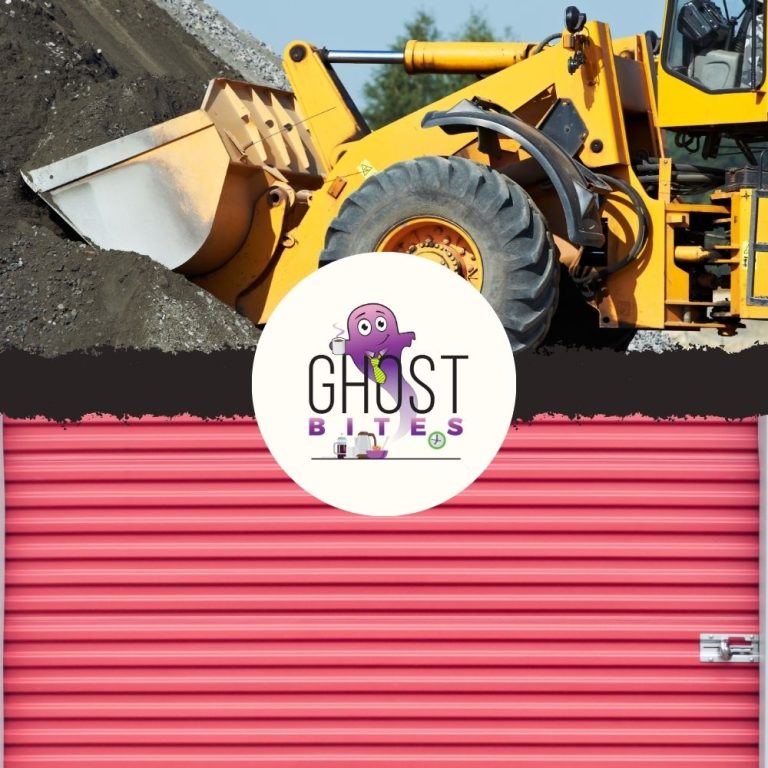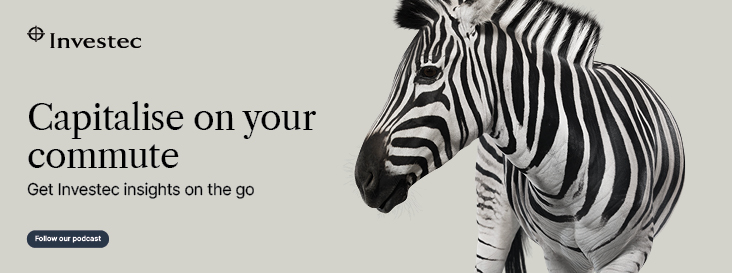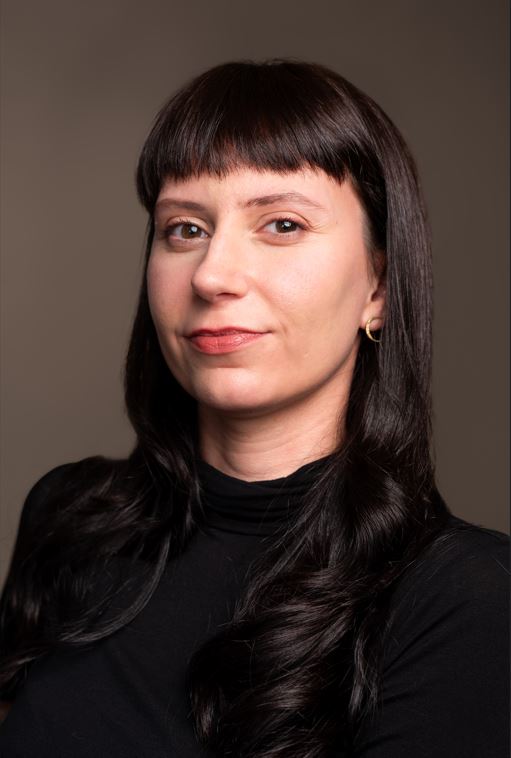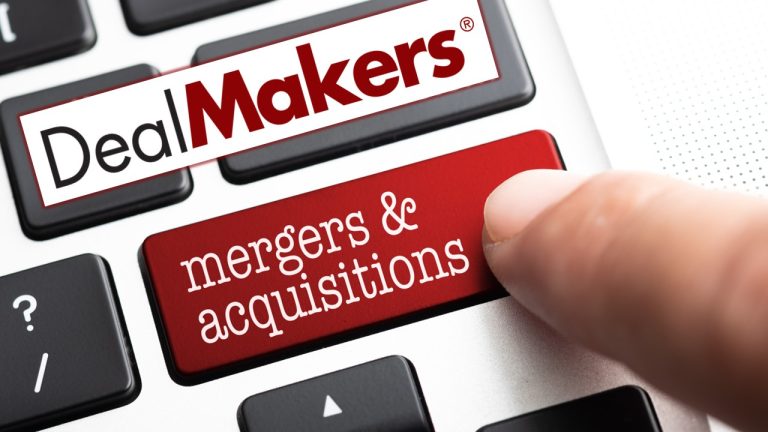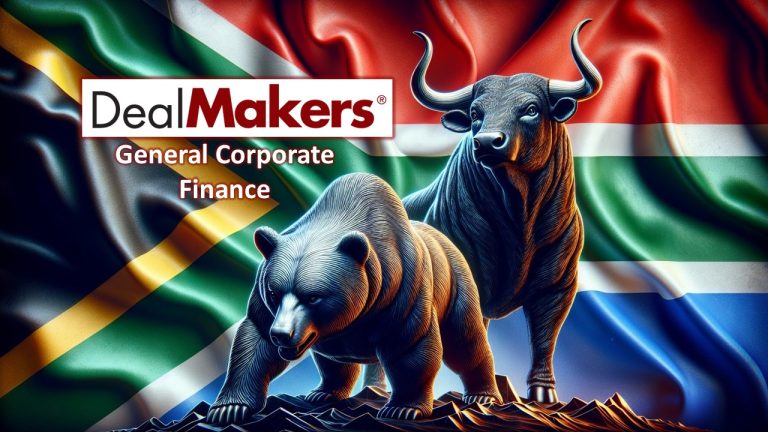Lesaka Technologies is among the most interesting companies listed on the JSE. With a growth strategy that is grounded firmly in the belief that Southern Africa offers one of the most exciting opportunities in the world today, Lesaka is executing from a tried-and-tested playbook of disruption in the fintech space.
To explain the opportunity and how Lesaka’s business model is built to win, Executive Chairman Ali Mazanderani joined me on this podcast. He brings deep experience in building multi-billion dollar platforms around the world.
In Ali’s own words, “A lot of the best innovation happens with constraint, not with largesse.” Get ready for fantastic insights into building platforms in Africa, with Lesaka as a homegrown example that can be accessed on the JSE. To learn more about Lesaka, you can visit their website here.
This podcast has been sponsored by Lesaka Technologies. As always, I was given an opportunity to dig into the strategy and ask my own questions in my quest to learn more. You must always do your own research and speak to a financial advisor before making any decision to invest. This podcast should not be seen as an investment recommendation or an endorsement.
Listen to the podcast here:
Transcript:
The Finance Ghost: Welcome to this episode of the Ghost Stories podcast. I’m so grateful for what I get to do for a living because I get to meet such interesting people, genuine movers and shakers in the world of business who are growing really impressive platforms and things that are actually making a difference in the economy around us every day.
Today is certainly no different, with some results hot off the press that you’ll be able to read about in Ghost Bites, although that’s not actually what we’re going to be covering today – I’ll elaborate on that shortly. Today, I’m grateful to be able to welcome Ali Mazanderani. He’s the Executive Chairman of Lesaka Technologies. What an interesting business – big platform play, lots of fintech, lots of attention in this space.
Ali, thank you so much. I know you are a Ghost Mail reader (which I’m always excited about) and you’ve made time today to come and speak to the Ghost Mail audience about Lesaka’s strategy, which is wonderful. Thank you for being here and I’m so looking forward to this chat with you.
Ali Mazanderani: Thank you very much. It’s a delight to be here.
The Finance Ghost: All right, so let’s jump into it because there’s a lot going on, right? We’ve seen a lot of activity in the fintech space – not just internationally, but on the local market as well. Lesaka was in the press this week for selling down the stake in Cell C. I saw that announcement come out. There’s been a lot of other stuff going on. There’s obviously all the stuff around Bank Zero.
We’re going to dive into all of this on this podcast to really understand the strategy. That’s what I wanted to get out the way up front, is for the listeners to understand what we’re doing on this podcast. We’re not doing a dive into the latest quarterly numbers. We’re not going to try and unpick note whatever of the financial statements – you can go and do that if you’re interested, I’ll cover that in Ghost Bites.
Instead, what we’re doing here is we’re taking advantage of the opportunity to chat to Ali to understand what is actually going on at the group, what the big dreams look like, and so much of the positioning and the themes that are driving this – that’s where I’d like to start.
Lesaka had an Investor Day earlier this year and I looked at the slides. There was this wonderful statement in there that Southern Africa is among the most attractive fintech opportunities in the world.
You also said there, Ali, that Southern Africa is positioned to be the next Brazil. Now I’ve looked at your profile. I know you spent some time working in Brazil and you’ve got a lot of experience working in emerging markets. What an exciting thing to be able to say about the place that I’ve always lived in – Southern Africa. I’m very passionate about this region of the world and it’s lovely to hear it spoken of in that way.
What are the conditions about this market that make you feel this way, that get you so excited about the opportunity right here in Southern Africa?
Ali Mazanderani: So I think that there’s plenty of parallels between our region and Brazil. And the markets that Lesaka addresses today are of a similar population. The South African environment is, from an economic perspective, a close corollary of Brazil. It’s just about a quarter or a fifth of the size, depending on the specificity of the area that you’re looking at.
But the reason why I drew the comparison (and to be honest, the comparison could have been drawn to pretty much any scale emerging market) is because I think a lot of the investor community and a lot of the market analysis that happens in South Africa has missed the context of what’s gone on in the rest of the world.
My perspective is that, while I cannot always predict the velocity of travel, it’s actually very easy to pick the trajectory because the story has been uniform. Whether that story is in Brazil, Egypt, India, Southeast Asia, or indeed in the United States or the UK.
I’ll try to summarise it for you. Basically, the dynamic is that the last 20 years has seen a revolution in the digitisation of commerce – a revolution that is still in the very early stages. I think we’re at the beginning of that S-curve.
And in the Southern African environment, the majority of transactions that happen at point-of-sale are still happening in cash. This is an extraordinary situation to be in, especially in a country that has one of the highest cash-handling costs in the world because of the crime.
When you look at the dynamics of what has pioneered the digitisation of other countries, it’s typically been from non-traditional fintech participants that may not have existed 20 years ago. Just doing a quick wrap around the world, starting with Brazil as you mentioned – the most valuable company in the financial services industry there is not Itaú or one of the traditional banks – it’s Nubank, an insurgent neobank. And the scale of the non-traditional bank ecosystem there is probably quite close to the size of the banking ecosystem now.
You have businesses like Bankinter, you have a merchant-acquiring business like StoneCo (which I was a material investor and on the board of for a long time). You have PagSeguro, you have EBANX, you have dLocal – businesses which have created, collectively, more than $100 billion of market value.
And the story is the same if we go to the UK, where the value of Revolut is more than the value of Barclays, NatWest, or Lloyds. And on the acceptance side, you also have a collection of insurgents – including the business I co-founded in Europe, Teya. But there’s an equivalency whereby the collective market cap of the fintech insurgents is probably close to an equivalency of the traditional banking ecosystem.
And for those who are skeptical and they say, “Well it can’t happen in, for example, the African environment.” Well in Egypt, Fawry is a business which, probably, only CIB has a larger market cap than now. It’s amongst the largest businesses in Egypt, and again it’s a business that didn’t exist 20 years ago.
The reason that this dynamic happens here and everywhere, to be honest – if you wanted to bore yourself we could go around almost every country – we could talk about Kazakhstan and Kaspi, or any of the other markets, and then you relay that to the South African environment and you quickly realize that that’s not the case. Even though there’s been quite a lot of noise – quite a lot of conversation (as there should be) around financial innovation here. Even with more high profile businesses (like, for example, the emergence of Lesaka and the recent listing of Optasia), it’s still a tiny fraction of the market cap of the traditional banking markets. As opposed to the sort of 50% that I mentioned there, it’s sort of closer to 1% or 2%.
And the dynamics that created those changes in the rest of the world were really threefold. The first one was that there was a disruption in the distribution, in different forms. The second one was that the incumbents had legacy technology, which prohibited the ability to engage effectively. And the third one was they had misaligned interests. They were usually protecting existing profit pools. The decision-making power within those organizations was about what was, not about what should be. So, it creates a huge challenge and only the bravest and those with the longest time horizon are capable of reinventing themselves. And those dynamics are prevalent in the South African market.
If you ask me, “Why has it not happened in South Africa?” I’d say, “Well, it has started to happen.” When I was last living in the country, I was working at FirstRand and almost no volumes at point-of-sale existed outside of the banking ecosystem. Today it’s about 10%. So there is an evolution. There were no fintech businesses of scale. Now there are at least a few, albeit relatively small.
But I think the reason is the collection of capital, talent and focus – and an enabling regulatory environment. The regulatory environment is improving to create that capability. Capital has historically not looked at South Africa as a growth equity environment. It’s probably been global capital that has been faster to recognise that opportunity than South African capital. And then you need to have a requisite critical mass of capable people exerting their energy and their time against it, but the ingredients are all there.
The train has well and truly left the station, it’s really just a question of how fast it’s going to go.
The Finance Ghost: Oh, there’s so much good stuff in there. That’s such a masterclass in understanding how to assess the growth conditions in emerging markets and also just how disruption happens. I want to touch on a couple of words you mentioned there.
Fintech insurgents: I love that, it’s absolutely right. You mentioned how they win – distribution disruption, legacy technology – the opportunity to obviously put in place brand spanking new stuff and do things differently. They’re not dealing with these big legacy businesses really, these big behemoths, that they can’t turn around. They can kind of dart around and do some cool stuff.
And then misaligned interest: That’s such a great point. It is that corporate management thing – “Let me defend my profit pool as I have it today.”
These are all the conditions that allow startups to come in and actually do really well. The point is how much can those startups scale? And historically that’s been the issue, certainly in the South African market. That’s why our VC industry here is actually so weak compared to what you see overseas – because the potential for loss is there (you know, the losing 30%, 40%, 50% of a fund), but we don’t see much of the “Oh, this could grow into Uber” that they have in the US with the rest of their money. So it’s great to see areas where that is happening, and fintech is clearly one of them.
You referenced neobanks there – that’s still a term that a lot of South Africans won’t be familiar with. As I understand it, that basically means an online-only bank, right? No physical location.
Ali Mazanderani: No, it could well have physical locations. So I would reference a neobank as being one that has not evolved out of the technology of the 1980s. Usually it’s a business that has an automated onboarding process, but the automated onboarding process does not necessarily mean that there’s not a physical presence. I think this is quite an important distinction, because I don’t believe that the insurgent neobanks of the future (in the African context) are not going to have human touchpoints, and there’s specific conditions associated with that.
The thing that I would say is that you need to be able to operate at a different level of efficiency from a transaction processing cost perspective in order to succeed. So I’m not sure if there’s a single distinction around a neobank, but by definition I would consider any bank that’s built its technology in the last five to ten years to be one.
The Finance Ghost: Okay, interesting. See, I’m learning all the time here, as is everyone listening to this, which is excellent.
You mentioned earlier that we could bore ourselves talking about all these countries around the world. I think you mentioned Kazakhstan – so interesting. I’ve got a good friend who knows a lot about that market and who looks at it all the time, so there are some voices in South Africa who are looking at these global case studies for disruption, etc.
I guess everyone in South Africa just reverts to the example of Capitec, who disrupted all of the retail banks and has shown what’s possible – look at what South Africans are willing to pay as a valuation multiple for that business. Again, it shows South African capital might be somewhat risk-averse and quite loss-averse. Given where the country’s been for the last ten years, there’s this general browbeaten feeling among investors of like, “Oh, how big can something get?” But once it proves itself, it’s amazing how the taps just open and then people are very happy to pay big multiples for these kinds of stories. It’s cool to see more and more of this on the JSE.
Ali Mazanderani: I think it’s wonderful and the Capitec story is a fantastic story. There are other fantastic stories of businesses that have been built effectively in South Africa. The one observation I would make, though, is that that’s not a business that disrupted either distribution or technology. That’s a business that operated more efficiently in a sleepy profit pool, so there’s a material distinction – because it’s operating out of a branch network with traditional banking infrastructure, it’s just efficient and effective.
And South African capital markets find it easier to extrapolate from a point. So typically the way that the view of market evolution works is the past is prologue. They don’t find it easy to register a technological inflection point. You may have all the necessary ingredients for a profound change – it may be, on balance of probability, much more likely that change is going to happen than a continuation of a norm – but the way that the mind works is: “This is the way it’s done. Let’s assume it carries on like this, and then let’s consider who’s best positioned in that context.” Rather than, “The rules of the game are about to change. Who’s best positioned to take advantage of that change?”
The Finance Ghost: “Sleepy profit pool” could be my new favorite term. Thank you for bringing that into my life, that is lovely. If you see that in Ghost Mail in years to come, you know where I got it from. Ali, that’s fantastic.
Let’s talk about the Lesaka profit pool then, which is the opposite of a sleepy profit pool. You’re going after, in some respects, a sleepy profit pool, but also just properly disrupting (as you say) – particularly in terms of distribution, which is one of the key ingredients for this.
So as I understand Lesaka Technologies: there’s the merchant division, the consumer division, and then there’s the enterprise division as well, which I think is a fair bit smaller than the others.
I just want to open the floor for you to walk us through the business model – just the very high-level Lesaka story, maybe dig into some of these verticals and why you have them. Give listeners an understanding so that if they wake up in the middle of the night and they need to think about what Lesaka is, they will now understand it going forward, and how it’s actually planning to make the big bucks.
Ali Mazanderani: So the three business units are, as you say, consumer, merchant and enterprise. The consumer business is, in effect, a neobank. We have 2 million active customers and we offer three main products: a transactional account product (so the main account linked to a card that you can use at point-of-sale or withdrawal from ATM), a short-term unsecured lending product, and an insurance product (which, in the Southern African context, is funeral insurance).
In the merchant business we have five products. Merchant acquiring (this is the acceptance of card at point-of-sale), alternative digital payments (which is the provisioning of prepaid or bill payment-enablement at a point-of-sale – so if somebody wants to buy airtime or pay their traffic fine, as an example), and then the third one would be cash, where we provide vaults that digitise cash for merchants so that they can immediately have access to funds. The fourth one would be software provisioning. We’re one of the largest point-of-sale software players in the hospitality space (that’s basically the software that enables a restaurant or a coffee shop to run itself more effectively). And then the last one would be credit – we also provide merchant credit.
Then in the enterprise space there are two major products: alternative digital payments and utility payments. I’ll touch on that a bit.
Our merchant base is about 130,000 and our consumer base is about 2 million. Our enterprise business is in the hundreds of enterprises.
In terms of the specificity of the strategy (both in the consumer and the merchant business), it is the exact same rule book that I explained earlier around what disruptors do. Just to give you some context – I’ve either been a founder of, an investor in, or a material participant in the creation of seven billion-dollar-plus fintech businesses around the world in four continents. So it’s a fairly well traveled playbook that’s been successfully executed on, and I consider this an extension of that (with some local specificity) because markets are not that different – they’re not identical, but they certainly rhyme.
In the case of those three disruptions, the first thing is we intend to disrupt distribution. And what is distinctive about that? The primary access of our business, both in the consumer business and in the merchant business, is not to have customers come to us. It’s not to say the customer is going to come into a branch or to say a customer is going to go into a retail outlet (which is also a strategy for some of the neobanks). It’s to say we will come to you.
And, as a business, Lesaka has close to 4,000 employees, of which a material portion (almost half, I expect) are basically field force, engaged in that frontline activity of actually going to the customer. And that allows you to go to the places that others cannot reach. The reason that others don’t typically go there is because they don’t know how to make the unit economics work. And they don’t know how to make the unit economics work because they may not have the technology that allows it to be effective, but also because they try to sell a product.
What differentiates us in the second degree is we’re not trying to sell a product. We’re trying to sell a collection of relationships. We’re trying to sell a situation in which, while we may be a digitally-first business, we have a human engagement and a human interaction that tries to focus on solving the needs of those customers.
So let’s take the consumer as an example. A large portion of our consumers do not just have one product with us, right? So they’ll not just be having a transactional account, they’ll also be using us for the lending product. They may also be using us for an insurance product. This allows you (basically) to have differential unit economics – you can defray the costs of that distribution associated with it.
And, unlike the competitors we have in those markets (people often talk about the competitive intensity) – I don’t think we have a competitor that offers those three products to that segment of customers, which is why (in the segment that we’ve been focusing on in the consumer space) we’re the fastest growing business in the country.
And I think the performance of our consumer business represents that. It’s a business which, a couple of years ago, was bleeding a lot of money and it’s now a business that is extremely profitable and growing very nicely. You can see the consistency associated with that. And we have a long runway to go around it, because I think we’re only getting started in that segment.
In the merchant space, the strategy is exactly the same. My intention is not just to sell merchant acquiring as a product and compete with a bunch of different players that are providing that. Most of my customers have more than one product (so, for example, they may well be utilising us for alternative digital payments). And then the ability to utilise the same infrastructure, the same point-of-sale, to do merchant acquiring creates best-in-class unit economics.
There’s been a lot of talk, for example, around the informal sector and the attractiveness associated with that. But in order to make that market work, it’s not about price. People think that pricing is the principal access – it’s about far more than that. It’s also about creating the use cases for those customers to use a digital store of value in an ecosystem that is predominantly cash.
So the important thing around our engagement with spaza shops is that we’ll allow them to use the money that they accept on a card payment to either purchase alternative digital products that they can sell to their customers (that is a revenue generating opportunity) or to pay their suppliers to remove cash from that ecosystem. And we have a network of suppliers that we contract with directly so that they don’t have to (if you’re a bread company or a milk company) basically have cash collections on a route in an area where the car is likely to get hijacked at the end of the road – or you’re likely to get cash leakage associated with it. So you’re solving an ecosystem problem.
And when people make a comparison on the competitor set, well, it depends on what you’re talking about. We have competitors for each of the products we offer, but, as a suite of offering, actually not very much. There is no business that offers that range. There are some that cross two or three of the product offerings that we have.
Now, in the case of our merchant business, the evolution of putting products together in a single proposition is earlier in the curve than the consumer business. We started on the consumer business close to three years ago, and then on the merchant business, we have bought products and are integrating into that whole, and we still have a little bit of a journey to go. However, I think that the existing configuration of what is there – and those people who are driving for it – is certainly very well-poised for growth.
We will need to create less complexity around the product brand representation in the market to fully affect this outcome, and that’s a process that we’re going on. So, today our business operates under almost 15 brands. Each of those merchant products has a different brand – the software brand is GAAP, the point-of-sale business in the informal environment is Kazang, the point-of-sale business in the formal environment is Adumo, the cash and credit business has historically been branded as Connect. So there is an evolution there, but the strategic intent is absolutely clear.
The logic of the enterprise business is basically that I don’t believe in a walled garden. I believe in trying to create a business that is indexed to what is best for society, where my energy and my efforts are not around trying to hold back the flood, but rather to get on the canoe and look forward to it.
So when we build each of these businesses, we recognise that there are sometimes product dependencies that the market may not have given us the option to utilise. And for both unit economics and also customer experiences reasons, we need to have ourselves. So as an example (and these are typically technology products), I don’t want to have third-party dependencies where I can avoid it in something like transaction switching, which is such a core part of delivering a payments proposition. And that can be for a card payment, but it can also be for electricity and for prepaid stores of value. So our enterprise business basically is the repository of that product.
If (on our consumer app) a customer wants to buy airtime, they can use our enterprise business in order to do so. If, in our merchant environment, a merchant wants to provide the provisioning of prepaid airtime, again – they will be utilising our enterprise business to provide that. But the logic is to say, “Well, why should we just provide that content for our own distribution? Why don’t we make it available to the industry as a whole?” And that’s what we’ve done.
So we have mobile network operators, retailers, banks, fintechs – all who use our content on alternative digital payments and bill payments and electricity on their own distribution. And they will white-label it. So for example, there’s a pretty good chance, if you are using your banking app to buy electricity or alternative digital payments (prepaid store of value), then the processing behind that may well sit with us. And we do it for the big banks in the country (who in some instances may be considered competitors), for the big retailers in the country, as well as for the telcos. And that allows us then to have a lower cost to serve for our own customers on our own distribution. So that’s the logic of it.
And that business is now becoming quite relevant in the ecosystem. It’s not one that was visible before, but in the last quarter you would have seen the profitability materially increase and that will continue over the course of this year.
And there’s one other thing about it that I think is quite important. As a business, we try to focus on the underserved arenas – underserved both in terms of consumers and merchants. And there are certain pockets of financial services that dynamic exists in, and one of them (we think) is electricity. So in addition to providing the transaction switching for that, in addition to providing the ability for consumers and merchants to utilise bill payments there, we also have a metering business where we go all the way down to the customer engagement.
The Finance Ghost: Ali, thanks. That’s a fantastic overview of such an interesting business. I want to ask you a question on each of consumer and merchant, and then I want to chat through some of the acquisitions that Lesaka has recently been up to.
Let’s do consumer first. So that’s the transactional accounts, the unsecured lending, the insurance products – which, as you quite correctly say, is mainly funeral cover in South Africa. That’s just specifically where the demand is here. So growth flywheels there – obviously quite a few, but one of them as you said is the cross-selling – it’s improving your share of wallet from a particular customer. This improves the lifetime value of a customer, I would imagine, versus your cost of acquiring.
I find it fascinating that roughly half of your employees are field force – so, getting out there, in-person distribution. Welcome to emerging markets! And in reality, when you look at low income South Africa, it’s almost a frontier market. I imagine it’s not that different to what you see elsewhere in Africa for example. South Africa is very much this tiered society where the needs at different tiers in society are very, very different. Some pieces of it look like the highest income places in the world and others are really comparable to the poorest frontier market. So, that’s super interesting.
The question I wanted to ask you is: the improving profitability in that space – does that come from unit economics that get better over time? That’s the share-of-wallet point. Does the cost of acquiring get more efficient or is it mainly a scale thing? That you just reach a point where you have enough customers doing enough things that you’ve now covered the costs and are growing. It’s both, right?
Ali Mazanderani: It’s both.
The Finance Ghost: It almost always is, right?
Ali Mazanderani: There is an infrastructural component to what we’re doing – you have to put down the railroad, right? And the cost of putting down the railroad exists independent of how many trains there are. But once you have the railroad in situ, the marginal economics of every additional train that’s going on is going to improve the dynamic, so you have to get above the threshold.
And one of the things I loved about the positioning of Lesaka was that it’s extremely irregular to have a growth equity insurgent fintech operating firstly with the capital market structure of being in a listed environment almost at birth. Secondly, we’re a business that’s delivered in our adjusted EPS more than 100% last year. We’re expecting to deliver more than 100% this year. So we’re setting ourselves to account for accretive profitable growth at a fairly substantive scale on the underlying – but we’re doing so while we’re very early in the evolution. It’s an interesting thing. It’s not something that I’d be challenged so much for in South Africa, but I was often challenged by people outside of South Africa as to say, “Why? Why are you holding that constraint? Why are you engaging with that?”
Well, firstly, there is a little bit of that expectation in the South African market – and being in a listed environment where multiples typically are adjudicated on an earnings basis, rather than on revenue or GP or other metrics.
But the second reason outside of that is actually very good discipline. A lot of the best innovation happens with constraint, not with largesse. So you need to have sufficient degrees of freedom (in order to have your sandboxes and to have your moments of innovation), but at the same time, creating some discipline and constraint around the hygiene of those unit economics means you never tread too far from the path.
So yeah, there is huge scale.
The scale is threefold. The first thing is you’re talking about the operational leverage of a specific business unit in the consumer business. You get that scale when you have more customers on board, when you have more cross-sell – that’s the revenue evolution story.
But then you also get that scale because, ultimately, the efficiency of the field force representation improves – especially when you get critical mass in a specific node. Then your GP out of your revenue will increase. But then you also have the fixed infrastructure costs of your technology, which would also create the advantages of scale, so basically your technology platform will not require the same cost increase as your revenue. So you get improving GP margins, you get improving EBITDA margins.
And then as a collective, as a group (and these dynamics are, by the way, the same in the consumer, merchant and enterprise business) we’ve also had to build a central platform. We have a NASDAQ listing, we have group costs associated with that. We have a central infrastructure that could accommodate a business much bigger than the business we’re in. So you’ll get operating leverage in that respect as well. Which is why I have the confidence I have that you can grow revenue at 20%–30%, you can grow EBITDA at 50%, and you can grow EPS at 100% – and you can do that for many years.
The Finance Ghost: Yeah, it’s pretty exciting, right? These are not the numbers that South African investors see very often on our market. And I personally have a great love of the few growth stories that we do have on the local market, of which Lesaka is one, so it’s great to dig in and understand it better.
The thing I wanted to ask you on the merchant side is something I’ve seen from following the property sector in detail. Specifically the property funds that hold a lot of retail shopping centers – they seem to be doing really well by being relatively near your lower income areas, your commuter routes. It’s that informal-into-formal retail trend.
Now, what’s interesting is that this tells me that consumers are actually getting way more comfortable with transacting – not necessarily digitally because obviously they can transact in cash in those environments- but there’s a formalisation of that environment. And I guess the opportunity for Lesaka is – or one of them at least – is that the informal sector needs to respond to that. They can’t just ignore them, or they risk losing that sort of spaza shop-level business.
Is that a fair comment? Because I always try to piece together what I’ve learned from different listed companies.
Ali Mazanderani: It’s certainly fair that the trajectory of travel in South Africa is towards digitisation, albeit at a pace that it should accelerate. And I think it’s absolutely fair to say that the arena that has the greatest growth potential is in – I’m going to not use the word informal and formal because I’m not 100% sure what it means – the peri-urban and underserviced areas of the country – because there is a big dislocate between urban city centres or affluent suburbs versus outlying areas. So that is completely true.
And we do see the product that is growing the fastest (we think the TAM is the biggest associated within those five that we’re talking about in the merchant space) is today our merchant acquiring business, which is the digitisation of card payments at point-of-sale.
However, things need to happen in the South African market for that to really reach its potential and that’s not going to happen on its own. With PayShap innovation, the market configuration, that’s a different conversation, but what really needs to happen is something else and I think Lesaka is at the forefront of that.
If you’ll allow me a slight segue, in essence, we don’t have a chicken-and-egg problem on digitisation in South Africa. Almost every adult in this country has an electronic store of value – has a bank account. In our neobanking environment it’s mostly market-share shift, it’s not that somebody enters the arena for the first time.
We do have a problem with acceptance. Only somewhere (depending on how you want to look at it) between 15% to 20% of merchants actually accept digital payment at the point-of-sale. The consequence of that is that customers have a bank account and more than 50% of deposit flows are withdrawn from an ATM or at a point-of-sale within a short duration of that. And it’s simply because there’s not the acceptance network there.
But I don’t think you’re going to find the lack of that acceptance network in Sandton. I think what you’re going to find is that lack of acceptance network is in the transport environment – it will be in rural areas, in the local community spaza shop or hairdresser. It will be in a different configuration. The point is, well, who’s filling that gap?
I think that gap is almost entirely being filled by the non-bank fintech disruptors, because it requires a different distribution strategy and it requires a different technology in order to affect in a cost-sustainable way.
The Finance Ghost: Ali, thanks. I’m learning a lot here about not just the business, but how you kind of view all of this. And I just love reading all these different companies and what they have to say and trying to piece together the story. Especially as someone who’s lived here in South Africa my whole life – such a fascinating country, honestly.
Let’s move on then into how you are plugging some of the gaps and growing the broader platform and bringing in new things. Because obviously there’s the organic growth story which you’ve spoken to – and there’s a lot of excitement there. You’ve got a lot of flywheels there on how you can just get bigger and better all the time. But like so many growth companies, being open to acquisitions makes a lot of sense, because it takes a lot of time to get certain things off the ground and sometimes it’s better to just buy what someone else has built at the right time, at the right price, right?
So the one big example is obviously Bank Zero. That’s a transaction that got a lot of attention for you this year. I think let’s maybe get to that after just understanding your broader acquisition strategy. So when you sort of take this top-down view, how do you think about when you should acquire something, when you should allow it to just build over time, and when you start it? And then we can get into Bank Zero as a perfect example.
Ali Mazanderani: So we gave ourselves a hygiene framework around acquisitions that we won’t do – acquisitions that are not going to be accretive. The consideration of accretive is ultimately on an earnings per share basis. So the first thing is it has to fit that framework for us. The second thing is it’s got to work within the strategic evolution that we have set out of building relationships with consumers and merchants by effectively evolving the product offering that we deliver to those.
And the question as to whether we’d build it ourselves versus buy it is around: “Do we have a business that is available to buy that fulfills the expectations of our customers, where we believe that we will be able to do so in a creative way?” Bank Zero met those expectations and it has product offerings that meet the expectations not just of our consumers, but also of merchants and of enterprises.
I would say that there was also a lot of familiarity with the team. I was brought up in South Africa and, after coming back from the UK for a period, I worked at FirstRand. So I actually knew Michael and Yatin from then and also as a private equity investor – Michael was the chairman of a business that I was, as a private equity investor, majority shareholder of. So we worked together on what was in effect an African fintech buy-and-build that had a very successful outcome. There was a lot of familiarity in that construct.
One thing I would say as a slight correction of the articulation is I’m not sure that this was a deal in which Lesaka is buying Bank Zero. I actually think if you look at the dynamics of the deal, you could infer it as being one in which Bank Zero shareholders are buying into Lesaka’s story and vision. 90% of the proceeds of this is in equity in Lesaka.
And so really it’s around a recognition of what Lesaka is doing. That’s important because the thesis that I outlined that is so evident from the rest of the world is also evident within leaders in the financial services community in South Africa. It’s not just the Bank Zero team. The Lesaka executive includes a previous co-CEO of Investec plc, leaders within Standard bank and other banking groups in the country. So, in terms of the logic of the transaction for us and for them, it’s a little bit around that distribution conversation or at least the industrial logic.
So what Bank Zero is – I think it’s the lowest-cost banking platform in the country and it has three things that I love. The first thing I love is, more than any of the others, it owns its own technology. There are degrees to which parties own their own technology, but fundamentally an enormous part of that bank is endogenously developed. The second thing is it’s extremely cost effective to run. I don’t think that there is any other platform that is as cost effective to run. And the third thing is it was evolved over the recent past so it had the ability to choose technology without the constraint of legacy. There’s a very experienced, very capable leadership team there which overwhelmingly came out of the FNB stable and that’s a very exciting place for us to build from.
One of the challenges that they had is that it’s a fully – in your interpretation of Neobank, right? – digital onboarding, digital-only business that was bootstrapped from the start, so they didn’t take material third party capital. And I do believe that, in the South African environment, there are segments of the population which may engage with that. But for the most part you need a facilitation of human engagement. You can do digital onboarding. You can massively reduce the complexity, the cost, and the friction of onboarding and getting a customer up and running. Today we can issue an account to a customer at the point of engagement, but there are many instances in which human interaction is complementary to the digital process.
And so what I think we provide for them is distribution not just in the consumer space, but also in the merchant space, which is a key area. So as I mentioned, you have a big salesforce. We have 130,000 merchants. We have 2 million customers. That’s a very attractive proposition, and I think they see the augmentation.
For us, we are not today regulated as a bank. We have an insurance company that is a subsidiary for our insurance business and we have a credit licence, we’ve got TPPP licences. But for our transactional account product, we have to have bank sponsorship, as do we have to have for the merchant acquiring proposition. That creates both dependencies and also cost leakage that we can avoid.
In addition to that, I don’t think that there’s a clear understanding necessarily from third parties of our balance sheet. We have about R1.5 billion that we lend to merchants and consumers that is predominantly funded from bank lines and equity. Clearly, if we have a bank as a subsidiary of that business and the credit business was sitting within that bank, we would be able to substantively reduce our gross debt.
The Finance Ghost: Yeah, absolutely. There is a very interesting balance sheet play there. I was wondering about – there must be a background relationship. I know you were at FNB and obviously Michael Jordaan was running that thing at a very young age. So I figured that there was going to be some kind of background relationship there. And that makes absolute sense because you’re right – and thank you for pointing that out – it is an equity deal. So it is a big show of belief from the Bank Zero team in the Lesaka story combined with Bank Zero. And that’s an important point.
Michael Jordaan’s got a lot of experience with this stuff. He was involved in the Optasia listing as well. He certainly gets around from a fintech perspective. He’s a busy man. He’s also a Ghost Mail reader, which is quite cool. So he’ll probably listen to this, which is nice. Hello Michael, if you are listening to this!
It’s going to be very interesting to see what happens with this whole Bank Zero story. You’ve touched on so many ingredients there for a good transaction and a good relationship. You’ve spoken to the leadership there, you’ve spoken to the fact that they have their own technology, their own licence. So that theme is definitely coming through in the way you think about this, which is to say I don’t want to be too dependent on third parties. I want to make sure I’m in control of my story and bring that Lesaka distribution to the products effectively that you can bring into the ecosystem. It does make a lot of sense.
Ali Mazanderani: May I just say one thing around the third party dependency? I come at this with an Android, not an Apple mindset. Not a walled garden, an interoperable ecosystem. We want to make available what we have within our proposition – whether it be hopefully our banking business, or it be our enterprise utility bill payment ADP business – we want to make available our products to the market as a whole, to other parties. And I’m very happy also to partner and have third-party relationships. That’s not the consideration.
The consideration is those third-party relationships have to be robust such that we can deliver on our promises to our customers. If you don’t have the right level of support in that ecosystem, both from a technology and from a sustainable economics perspective, then it makes sense to evolve. But I don’t think that any business that has the breadth of ambitions that we have is not going to have a multitude of partnerships in order to be delivering effectively.
It’s just some of the core and critical functional areas – you need to make sure that you can be the change that you need to see.
The Finance Ghost: Yeah, absolutely. If you’re a delivery driver, you want to own your car. You don’t want to rely on Uber arriving every single time you press the button. It’ll arrive 99 times, but there will be that hundredth time when it doesn’t, and then life is going to go very badly for you. So it’s about owning the most important stuff.
I think let’s chat about some of the recent disposals as we start to bring this to a close. One of them was the disposal of MobiKwik that had a bit of a negative impact on the financials in the quarter when it happened and some negative charges.
I think what’s more important is to understand the strategy. You also sold off the Cell C stake as I understand it, based on news hot off the press from Blu Label this week. I’m less interested in the absolute specifics of these things – because it’s more about what you’re building – I’m interested in understanding just how you think high-level about these disposals and the assets you’ve got on the balance sheet.
Were they just clearly non-core? Is it legacy stuff? Just to help people understand where this stuff came from.
Ali Mazanderani: These were all investments – so my engagement with Lesaka started around 2020 with the VCP investment and I joined the board as a non-executive director. In February 2024, I took over as the executive chairman, so my proactive executive responsibility started about 18 months ago. But I had some involvement in the business before.
The business that we invested in and that I joined the board of had a bunch of legacy investments on the balance sheet. The strategy that we set out then was very clear, that we would in an orderly manner – in the manner that was going to hopefully provide the best outcomes for shareholders – divest of everything that was not core to the strategy that we’ve been discussing over the last few months. And to be honest these are two of the last assets in that configuration. There’s really not much else – very small pieces that are left over.
I think it’s helpful because it will remove noise on the balance sheet. What inevitably happens in these things in the case of the MobiKwik business is there was a value that was marked. We exited when the business IPO’d on the Indian Stock exchange and our lockup was over. That crystallised a negative balance sheet outcome. But it had no – I don’t think it had a negative impact on the business. On the contrary, the consequences of that was cash proceeds that could be utilised for our core objectives.
I think in the case of the Cell C business, I hope the IPO goes well, but our core business is not a mobile network operator. I think for us it’s just about trying to ensure that we can deliver fair value for our customers. We don’t know what the outcome of that is going to be because the deal that we signed and that is in the public domain has an underpin, meaning that the pricing registered there, the R50 million in the event of the IPO is a minimum value. It’s not the actual value proceeds – that will be contingent on what happens in the IPO.
The Finance Ghost: Yeah, absolutely. And probably also worth just mentioning that the Bank Zero deal is also going through regulatory approvals, right? It’s not closed yet. It’s still got to go through big regulatory stuff.
Ali Mazanderani: It is not closed yet. It is still going through regulatory approvals. We think that is going well and we have an expectation that it will complete by the end of this financial year. But ultimately, as you say, we are in the hands of regulatory approval.
The Finance Ghost: Fantastic, Ali. Time does fly when we’re having fun and I’ve had a lot of fun on this, so thank you. I think we probably need to close it there because we’ve covered a lot of excellent stuff. Thank you so much for your time today.
To the listeners, I would encourage you to go and do your research obviously on Lesaka. Nothing you’re hearing here is an endorsement from me per se. It’s really just bringing someone like Ali to you to talk about Lesaka and because Lesaka values the Ghost Mail audience and wants you to understand their story.
So go and read, go and read and read and read. You can never read enough. Go and do the research. Go and decide for yourself if Lesaka is something that you are interested in.
Personally, I’m just so excited to see more of these fintech growth stories starting to emerge on the JSE. It really does make our market more interesting and it does feel like it’s been a good year for the JSE. Obviously Lesaka has been on the market for some time, but the point is that the story is really just coming into its own now – scaling, interesting numbers coming out, non-core assets out the way, doing some big transactions.
It’s an exciting time to be you, Ali. Although you’ve done a lot of this in your life, so I guess it probably feels like you’ve been there, done that!
All the best with this. I hope that we’ll be able to do another one of these at some point. I’d love to keep the audience updated on what Lesaka is up to. All the best. And thank you for your time.
Ali Mazanderani: Thank you very much. I enjoyed it. Thanks a lot.

